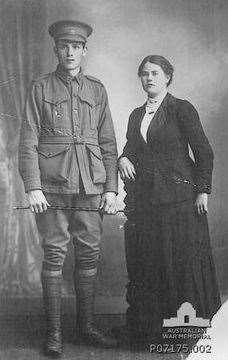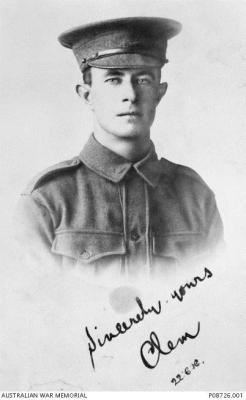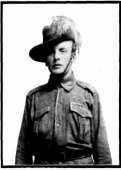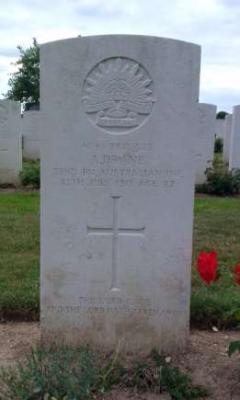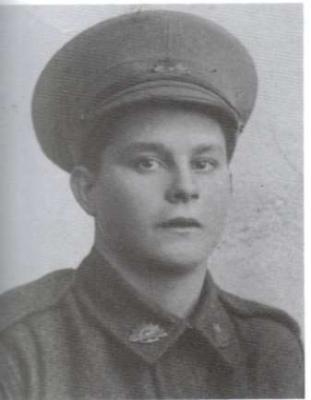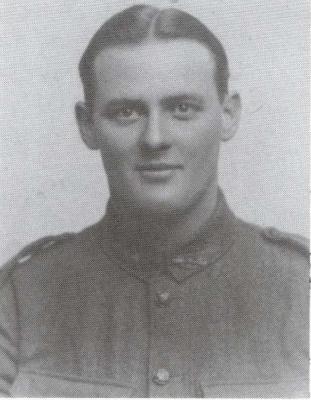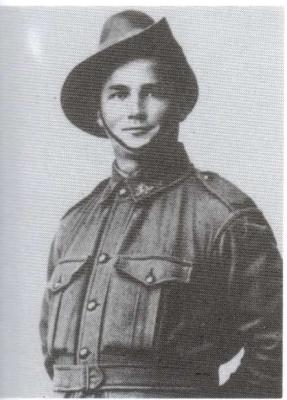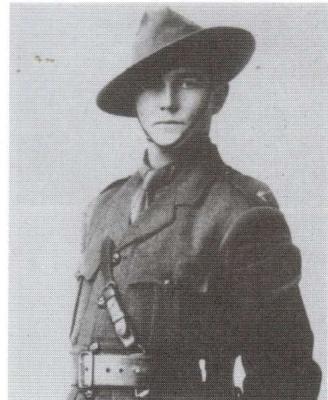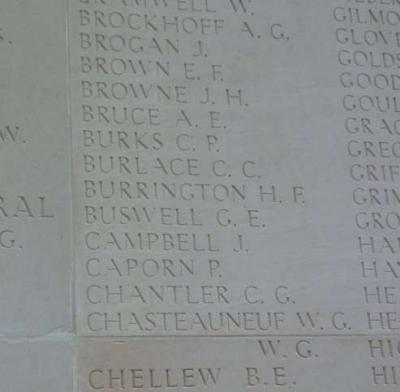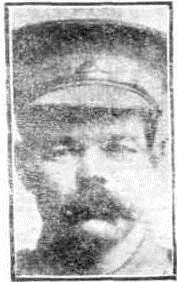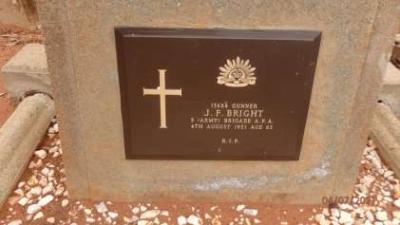Not Forgotten, 2574 Private George William Thomas GREENHAM, 44 Battalion AIF, World War 1
Commemoration of the military service of 2574 Private George William Thomas Greenham, 44 Battalion, killed in action 4 October 1917
Private George Greenham was born near Dartmoor in Victoria, the son of A.J and Emily Greenham later of Badgerin, north of Dowerin. He enlisted in the 44th Battalion A.I.F. at Perth on 2 July 1916, giving his occupation as farmer, aged 22 and standing 6 foot tall. George Greenham enlisted just weeks before his brother Arthur was killed in France. After being in the army only 2 weeks, George Greenham was taken to the Claremont Clearing Hospital with measles, and was transferred to the Victoria Hospital in West Subiaco.
On 9 November 1916 George Greenham embarked on A8 the Argyllshire at Fremantle, arriving at Devonport in England on 10 January 1917, where he soon found himself in Fargo Hospital for 19 days with mumps. However on 19 April 1917 George was heading overseas to France, joining his unit on 23 April 1917. The 44th spent the bleak winter of 1916-17 alternating between service in the front line, and trainingand labouring in the rear areas.
The battalion fought its first major battle at Messines, in Belgium, between 7 and 10 June. In the months that followed it was heavily employed in the Ypres sector in costly defensive operations. On 7 and 10 August George Greenham was wounded and remained at his post.
The 44th Battalion was next employed in a major attack at Broodseinde Ridge on 4 October, part of the Ypres offensive of 1917. It was a large operation, involving twelve divisions, including those of both I and II ANZAC. The attack was planned on the same basis as its predecessors - the attacking troops' objectives were approximately 1,500 metres deep, the advance would be preceded by a massive artillery bombardment; and a creeping barrage would lead the troops on to their objectives and then protect them while they consolidated their positions.
The attack began before dawn on 4 October 1917. The Australian troops involved were shelled heavily on their start line and a seventh of their number became casualties even before the attack began. When it did, the attacking troops were confronted by a line of troops advancing towards them; the Germans had chosen the same morning to launch an attack of their own. The Australians forged on through the German assault waves and gained all their objectives along the ridge. It was not without cost, however. German pillboxes were characteristically difficult to subdue, and the Australian divisions suffered 6,500 casualties. Of the 992 men of the 44th Battalion who were involved in the Ypres operations, only 158 emerged unwounded when it was finally relieved on 21 October.
George Greenham was killed on 4 October 1917, the first day of the battle and he was buried at Bedford House Cemetery, one mile south of Ypres. Private Greenham was awarded the British War Medal and the Victory Medal. That day, 4 October 1917, was a costly one for Dowerin with Roy Angus of the 27th Battalion and Victor Lundy of the 46th Battalion also killed on that day at Broodseinde.
Details
Details
When the Great War broke out in Europe in 1914, Dowerin was an isolated farming district, several days travel by horse or by coach from Perth. Over the succeeding four years at least 176 men and one nurse served in the armed forces of the Empire. The names of the men who served can be read on the Honour Roll in the Dowerin Town Hall or can be accessed on the museum section of the Shire of Dowerin website.
Fifty-one men from the district died in the Great War and their names are inscribed on the Dowerin War Memorial which was unveiled on ANZAC Day 1936. Subsequent conflicts have seen more names memorialised and each ANZAC Day their sacrifice is honoured and remembered by the community.
For some years Diane Hatwell had been intrigued by the names on the Dowerin War Memorial. Some were familiar with the families still in the district but some not so. Diane felt It was important for the community that when we said each ANZAC Day “We will remember them”, we had some idea of who and what we are remembering. She set about, to find out who they were, what they were doing in the Dowerin district, and where and how they died. These pages presented through Collections WA represent the current state of this ongoing research and community response.
Open in Google Maps
Nearest geotagged records:
- World War 1, Western Australia, CHIVERS, 16 Battalion, 1914 (1.11km away)
- World War 1, Europe Belgium Ypres, 1914 (1.7km away)
- Pre-World War 1 , Europe France Ypres, 1914 (1.7km away)
- World War 1, Australia, Western Australia, 1234A CHEETHAM, 10 Light Horse (1.82km away)
- World War 1, Europe Belgium Ypres, 1914 (1.87km away)
Other items from Dowerin District Museum
- Not Forgotten, 2891, Private Arthur Engle GREENHAM, 48 Battalion AIF, World War 1
- Not Forgotten, 865 Corporal Clement Cook Junction FREARSON, 44 Battalion AIF, World War 1
- Not Forgotten, 65 Sergeant Henry John EATON, 10 Light Horse AIF and 51 Battalion AIF, World War 1
- Not Forgotten, 4049 Private Alfred DRANE, 32 Battalion AIF, World War 1
- Not Forgotten, 3440 Private Charles Thomas DAY, 16 Battalion AIF, World War 1
- Not Forgotten, 2896 Sergeant Thomas Montague DAVIES, 51 Battalion AIF, World War 1
- Not Forgotten, 7097 Corporal Wesley John COOKE, 16 Battalion AIF, World War 1
- Not Forgotten, 882 Lieutenant Leonard Charles COOKE MC, 11 Battalion AIF, World War 1
- Not Forgotten, 3132 Private Frank James CARD, 48 Battalion AIF, World War 1
- Not Forgotten, 4758 Private George Edward BUSWELL, 48 Battalion AIF, World War 1
- Not Forgotten, 2838A Private Albert George BROADBENT, 5 Pioneer Battalion AIF, World War 1
- Not Forgotten, 13684 Gunner James Frederick BRIGHT, 3 Field Brigade Ammunition Column AIF, World War 1
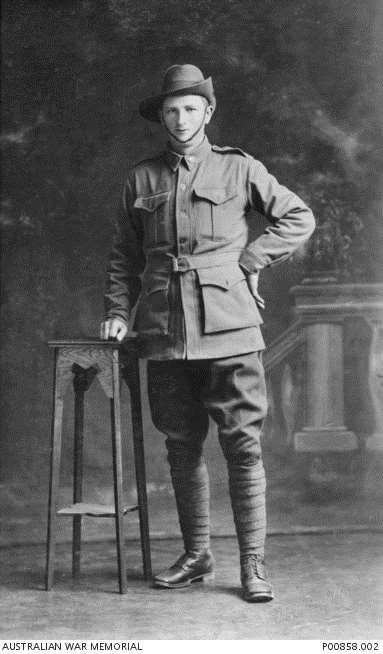
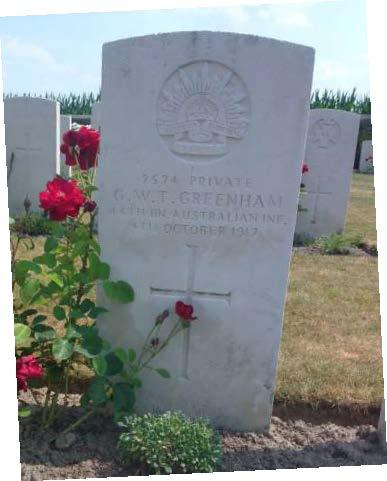
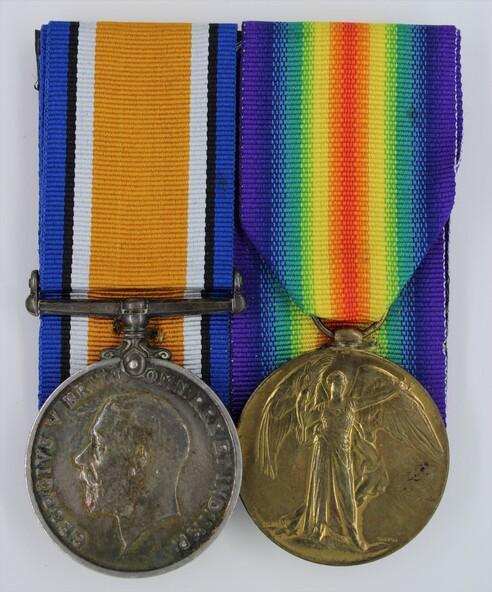
Scan this QR code to open this page on your phone ->

